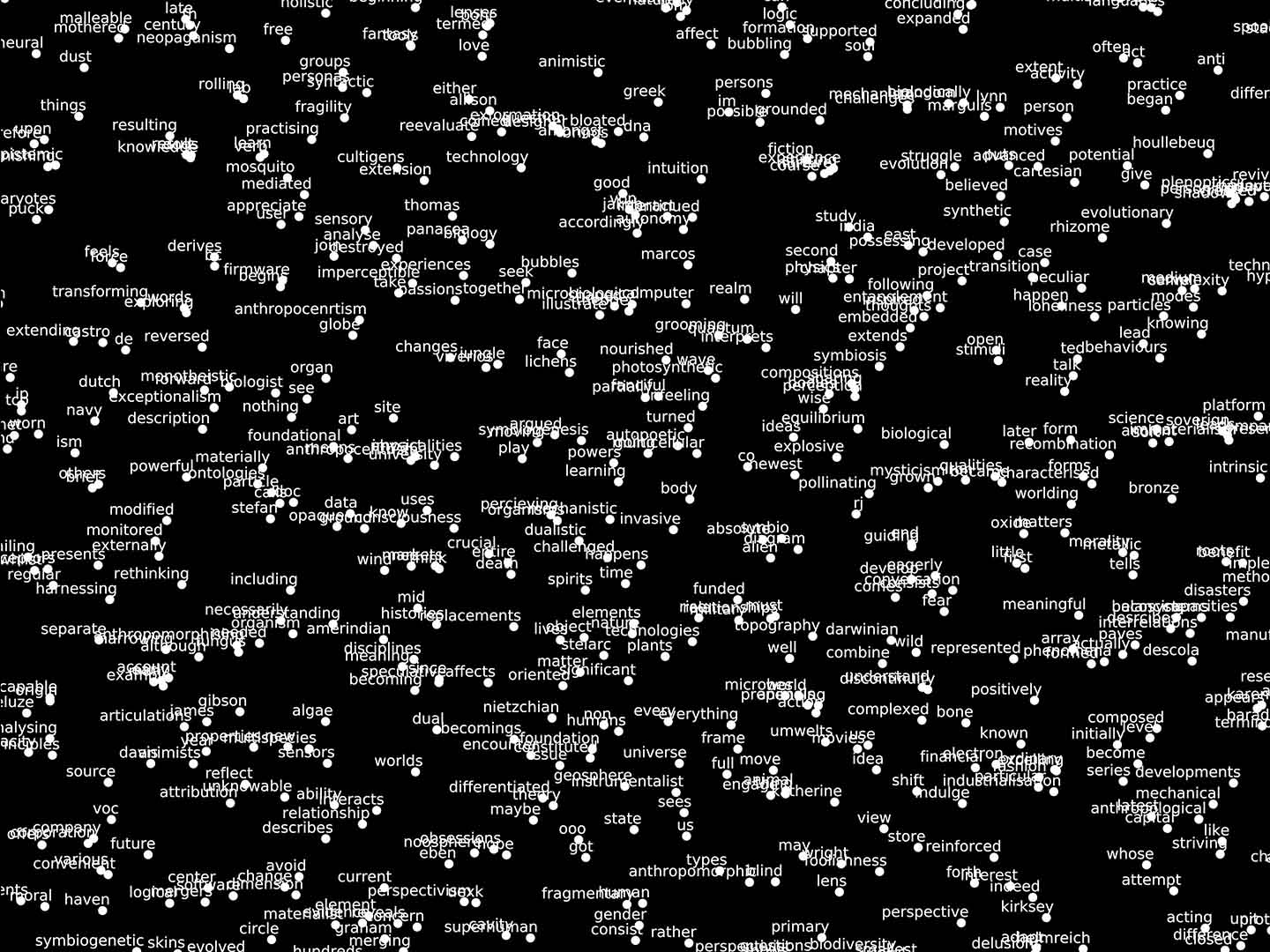
Weaving Worlds:
A
collective venture into human-nonhuman entanglements
2016
Baum & Leahy in collaboration with Rob Walker
Weaving Worlds featured on It’s Nice that: Weaving Worlds: how artificial intelligence can push human creativity
2016
Baum & Leahy in collaboration with Rob Walker
Weaving Worlds featured on It’s Nice that: Weaving Worlds: how artificial intelligence can push human creativity
Experimental
collaborative writing project made with Amanda Baum, Rob Walker and a
'non-human mediator' at The Royal College of Art in 2016. Building on the
dynamics between individual and collective working and writing, the volume is
split up into three individual parts weaved together, seeded in a collective
introduction and summarised in a collective discussion and conclusion. To move
beyond solely human logic and individual authorship, we included the findings
of a machine learning algorithm throughout the process, aiming to approach the
influence of 'the nonhuman' on academic and creative discourse.

The
following text is an excerpt from the collective introduction:
"Winding through biological complexity, prehistoric beliefs and contemporary science we find a timeless and timely web of resonances. Across disciplines the Nonhuman Turn emerges, decentering the human and uncovering unexpected and unconsidered outcomes. Questions of interrelations between objects and organisms open a vast space of creative discourse. The melted permalinks become kindling for the emergence of complexity in its infinite organic and inorganic permutations. In this liminal space, we find opportunities for interweaving human and nonhuman worlds to practice our tools for cohabitation.
In response, Weaving Worlds is a collective venture between us: three human authors and a nonhuman mediator. The idea emerged from a shared wish to evolve the typical structure of an individually authored dissertation in order to embody the discourses that underscore our work. By taking the dissertation as a design brief we create a reflexive dynamic between structure and content making the project an active research into our interests and creative practices.
Including a nonhuman logic into the writing process acts as a provocation that such insight is valuable, and that purely human thinking may not achieve such different and unexpected outcomes. It is worth emphasising these two elements, different and unexpected, as opposed to efficient, productive or intelligent, the buzzwords usually associated with artificial intelligence (AI). Opaque and remote, transparent and immanent, AI’s are the neoliberal control mechanism du jour used as means to model and abstract persons, manipulate and divide communities and mediate and reify social relationships. By reorienting these tools we embody the critique through which emergent trajectories can be envisaged.
The nonhuman mediator is a machine learning algorithm that synthesises new thematic connections between our texts by revealing latent semantic patterns. The algorithm is the skip-gram version of word2vec. Vector Space Models (VSMs) such as word2vec represent objects, in this case words, as indexes and their syntactic relations as vectors."
"Winding through biological complexity, prehistoric beliefs and contemporary science we find a timeless and timely web of resonances. Across disciplines the Nonhuman Turn emerges, decentering the human and uncovering unexpected and unconsidered outcomes. Questions of interrelations between objects and organisms open a vast space of creative discourse. The melted permalinks become kindling for the emergence of complexity in its infinite organic and inorganic permutations. In this liminal space, we find opportunities for interweaving human and nonhuman worlds to practice our tools for cohabitation.
In response, Weaving Worlds is a collective venture between us: three human authors and a nonhuman mediator. The idea emerged from a shared wish to evolve the typical structure of an individually authored dissertation in order to embody the discourses that underscore our work. By taking the dissertation as a design brief we create a reflexive dynamic between structure and content making the project an active research into our interests and creative practices.
Including a nonhuman logic into the writing process acts as a provocation that such insight is valuable, and that purely human thinking may not achieve such different and unexpected outcomes. It is worth emphasising these two elements, different and unexpected, as opposed to efficient, productive or intelligent, the buzzwords usually associated with artificial intelligence (AI). Opaque and remote, transparent and immanent, AI’s are the neoliberal control mechanism du jour used as means to model and abstract persons, manipulate and divide communities and mediate and reify social relationships. By reorienting these tools we embody the critique through which emergent trajectories can be envisaged.
The nonhuman mediator is a machine learning algorithm that synthesises new thematic connections between our texts by revealing latent semantic patterns. The algorithm is the skip-gram version of word2vec. Vector Space Models (VSMs) such as word2vec represent objects, in this case words, as indexes and their syntactic relations as vectors."




